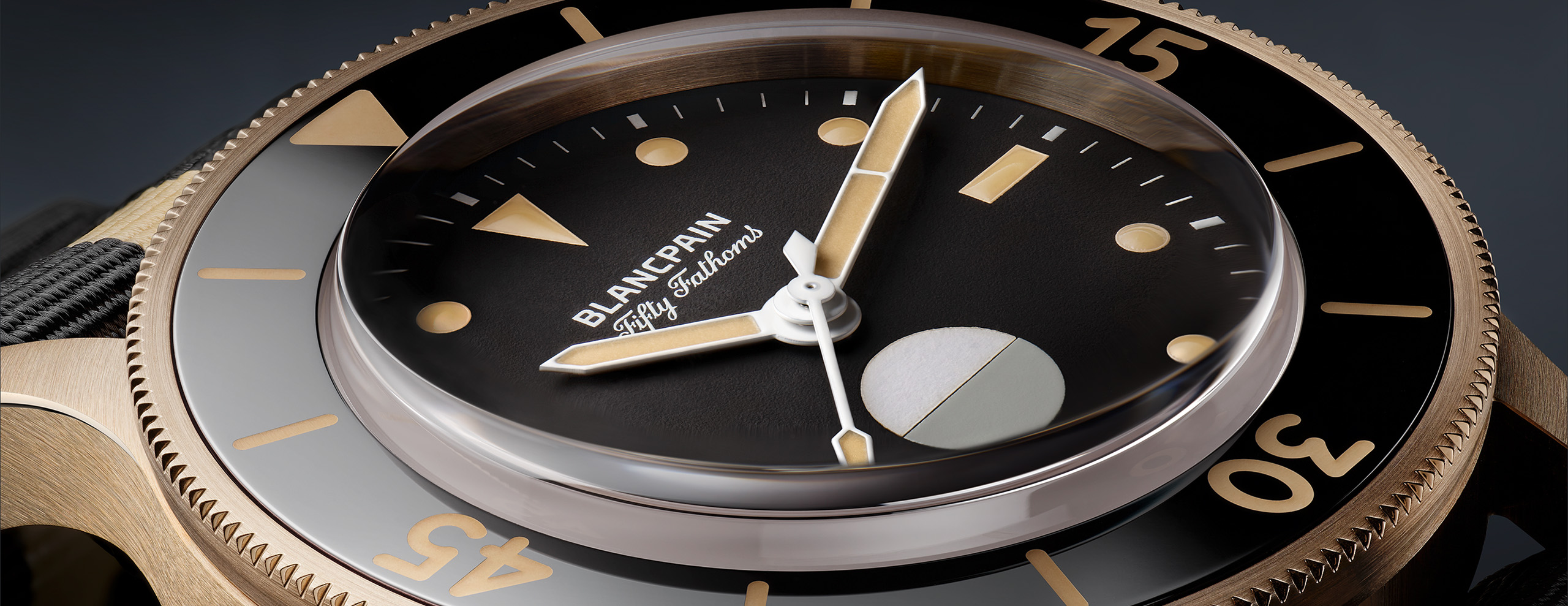Reflecting today’s rapidly evolving tastes and lifestyles, “quiet luxury” has emerged as a trend that guides the modern consumer, eschewing conspicuous branding, flamboyant colors, loud names, and excess use of precious materials such as gold and diamonds — unless you’re a rapper or music mogul, in which case that is only par for the course. Rather, quiet luxury puts a strong emphasis on pure quality and distinct identity.
This notion of luxury appeals especially to those who value excellence and discretion, often striking a chord with individuals of “old money”, such as those so accurately reflected in the HBO series Succession. Indeed, even Jay Z has moved on to quiet luxury timepieces these days, for they possess an inherent elegance that resonates with all who desire luxury in its purest form.
So for those who lean towards subtlety, functionality, and seek a more understated form of luxury, the Blancpain Fifty Fathoms emerges as a unique and compelling option.
The epitome of luxury dive watches
To grasp why the Blancpain Fifty Fathoms holds such a special place in the world of contemporary luxury, we first need to understand the essence of luxury watches. At its core, a watch is designed for timekeeping — a function it should execute with flawless precision. However, the line between a basic timekeeping instrument and a luxury timepiece is marked by the meticulous craftsmanship, intricate design, and superior finishing that elevate the latter to an exceptional standard.
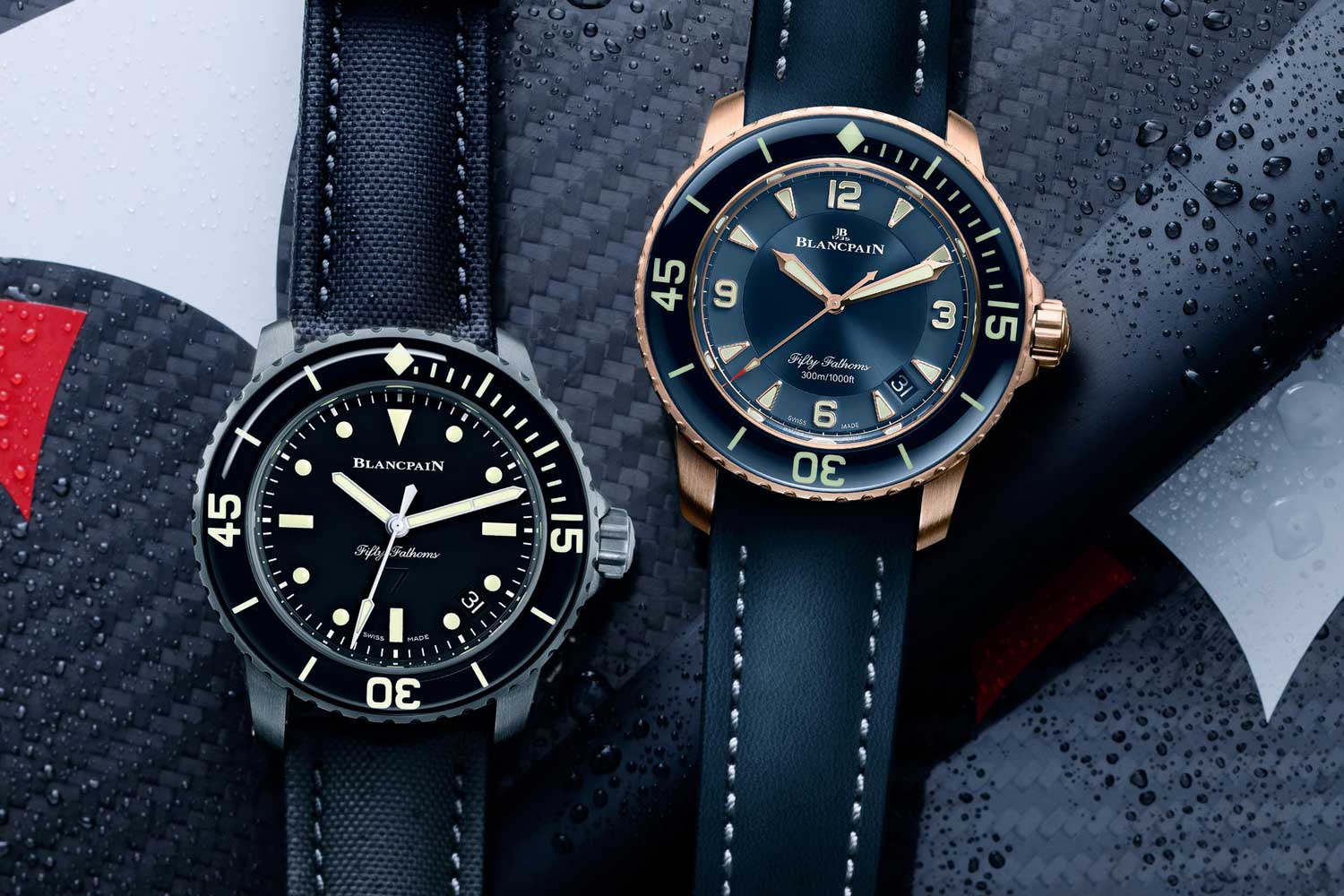
From left: Fifty Fathoms “Nageurs de combat” in steel, Automatique in red gold (Image © Revolution)
And what of dive watches? These rugged timekeeping tools are engineered to excel in challenging underwater environments. Borne of pure utility, their primary mission is to keep accurate time while remaining legible and durable to ensure the safety of divers. So can a dive watch transform into a luxury timepiece without compromising on practicality and straying from its identity as a reliable tool watch? The Blancpain Fifty Fathoms provides a compelling answer to this question.
Over the course of 70 years, the Blancpain Fifty Fathoms has undergone a remarkable transformation, evolving from a utilitarian dive watch into a symbol of modern understated luxury. Very much a cult favorite among dive watch enthusiasts today, it resonates with individuals who possess discerning taste and who seek something genuinely distinctive, and that traces its origins to a most seminal moment in modern watchmaking history.
Consider this: The bezel insert of the present day Blancpain Fifty Fathoms isn’t a typical polished ceramic disc commonly found in dive watches. Instead, it features a dramatically domed piece of sapphire crystal. This might be but a minute feature in the grand scheme of things, however, when you see it up close, you’ll immediately sense its elegance and the opulent aura it exudes. More importantly, there is nothing else quite like it, and over time the domed sapphire crystal along with other signature hallmarks has come to define the core aesthetic of the Fifty Fathoms.
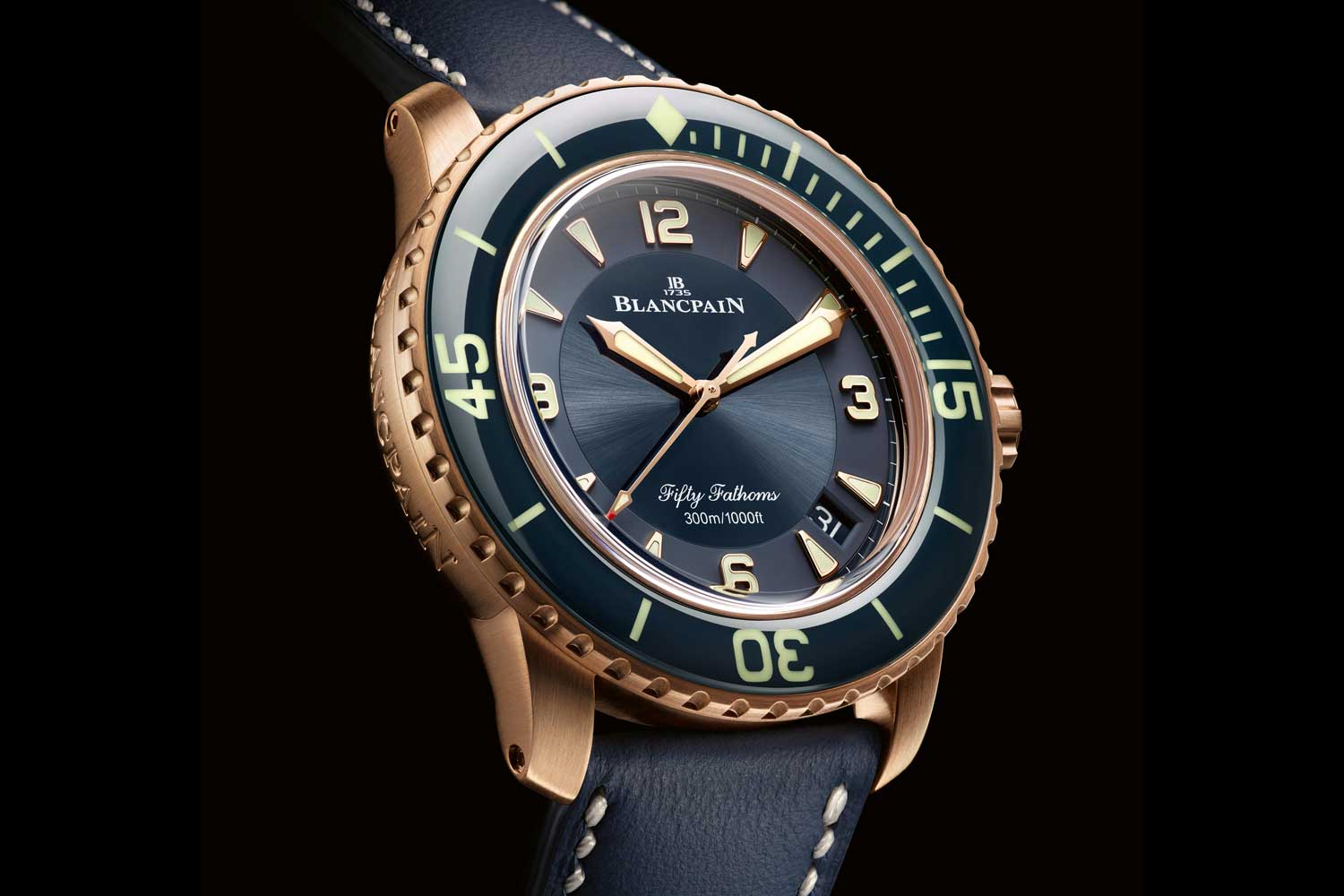
Fifty Fathoms Automatique
Likewise, the watch’s crystal also takes a rounded and domed design, exuding an unmistakable aura of sophistication and elegance, making it ever popular among watch enthusiasts. While the modern Fifty Fathoms stands at a robust 45mm, don’t be daunted by its dimensions. The broad bezel effectively reduces the available dial space, resulting in a more compact overall appearance. Those short and downturned lugs minimize the watch’s footprint and guarantee a comfortable fit on your wrist. In select models, the use of lightweight titanium or ceramic keeps the watch lightweight despite its strapping proportions. These thoughtful details combine to ensure that the Fifty Fathoms exudes confidence and a commanding presence while maintaining a balanced and non-overwhelming feel on the wrist.
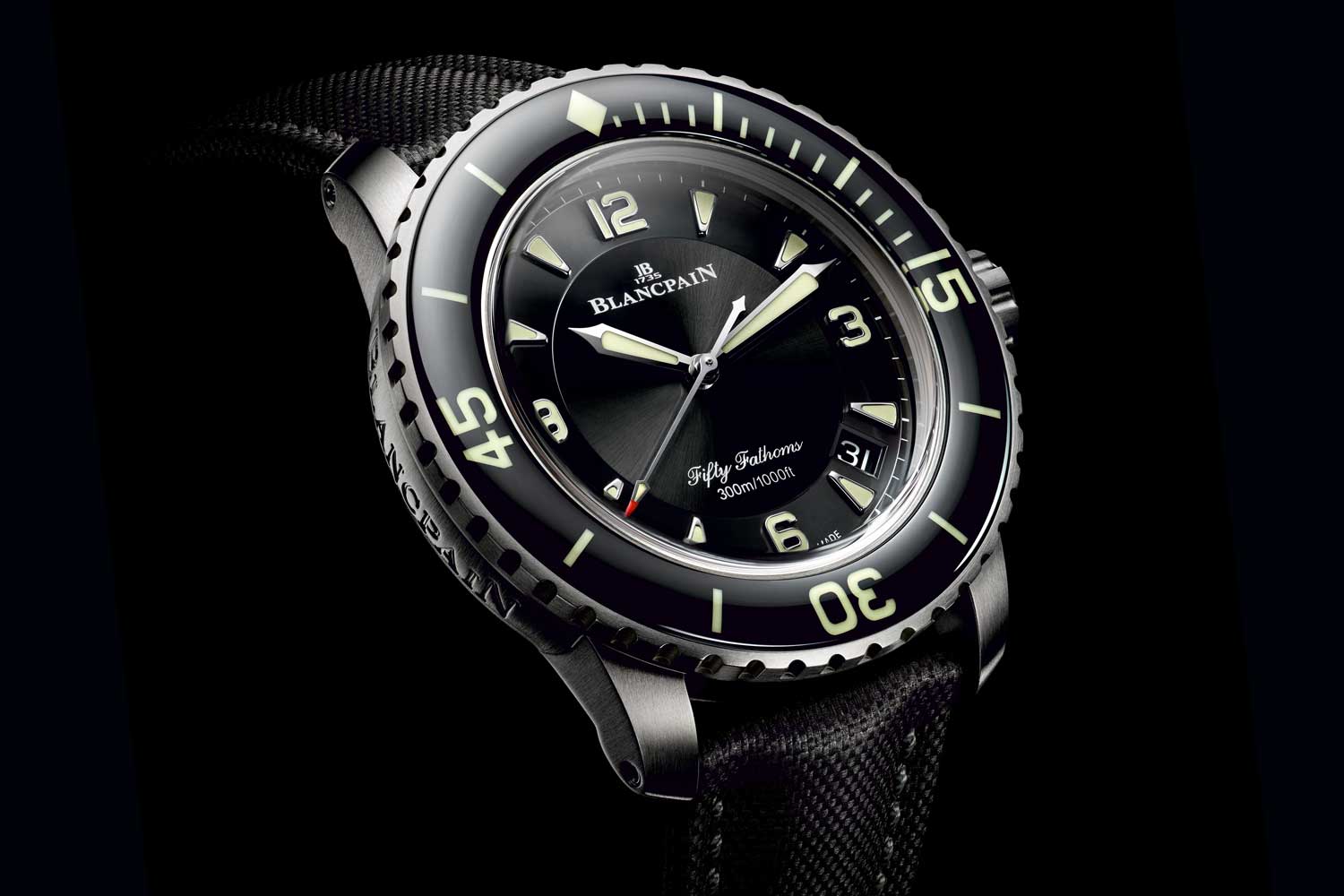
Fifty Fathoms Automatique in titanium
Through the years, the Blancpain Fifty Fathoms has also consistently evolved in the horological sense, featuring some of the manufacture’s signature high and medium complications such as the 8 Days Flying Tourbillon, its triple calendar with moon phase display, the day-date function, the big date function, and many more. Yet at its core, it remains true to its roots as the earliest dive watch in recorded history. Its style doesn’t flaunt opulence; instead, it embodies refined taste, becoming a symbol appreciated by true enthusiasts who recognize its stature.
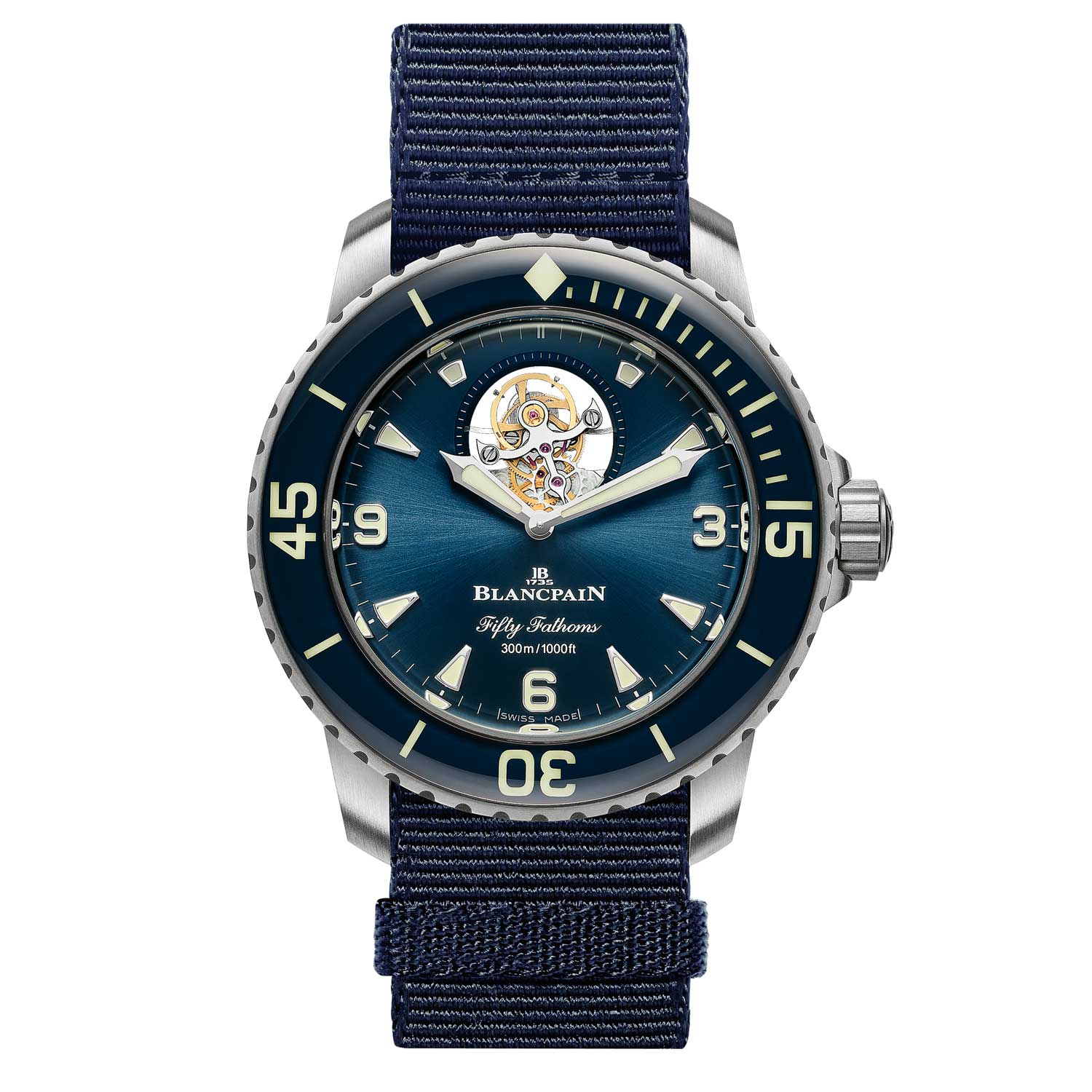
Blancpain Fifty Fathoms Tourbillon 8 Jours, Ref: 5025-12B40, with NATO strap
But how did the Fifty Fathoms come about?
To truly understand the story of the Fifty Fathoms and thus the significance of its modern identity, we must trace its origins and evolution. The first chapter begins with Jean-Jacques Fiechter, who played a pivotal role in the company from 1950 to 1980. Fiechter was not only a businessman but an avid diver as well. His firsthand diving experiences inspired solutions for underwater timekeeping challenges, which included a double-sealed crown, a bezel lock, and a system securing the “O” ring in the case back channel, all patented by Blancpain.
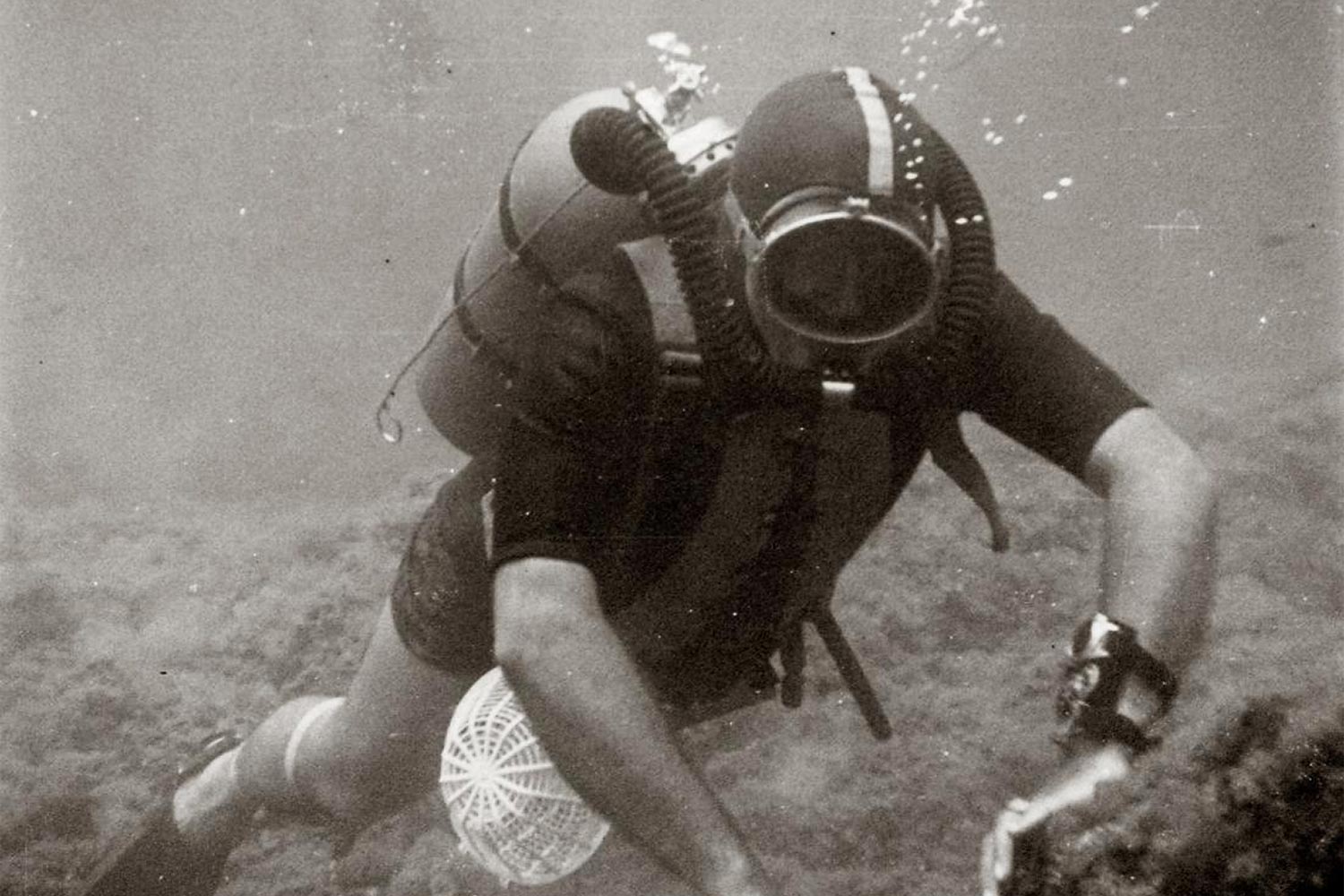
Jean-Jacques pursuing his underwater hobby. Image by Blancpain.
Simultaneously, French combat divers Captain Robert “Bob” Maloubier and Lieutenant Claude Riffaud faced difficulties with the choice of watches available in Paris, which were challenging to read underwater and prone to leakage. Their path crossed with Jean-Jacques Fiechter’s, resulting in the birth of the Fifty Fathoms. It passed the rigorous tests of the French military and became an essential tool for divers.
However, a supply issue emerged as the French government mandated the sourcing of all dive gear from French companies only. This led to a partnership with Spirotechnique, a subsidiary of Air Liquide, who then marketed the Fifty Fathoms under their “Aqualung” brand.
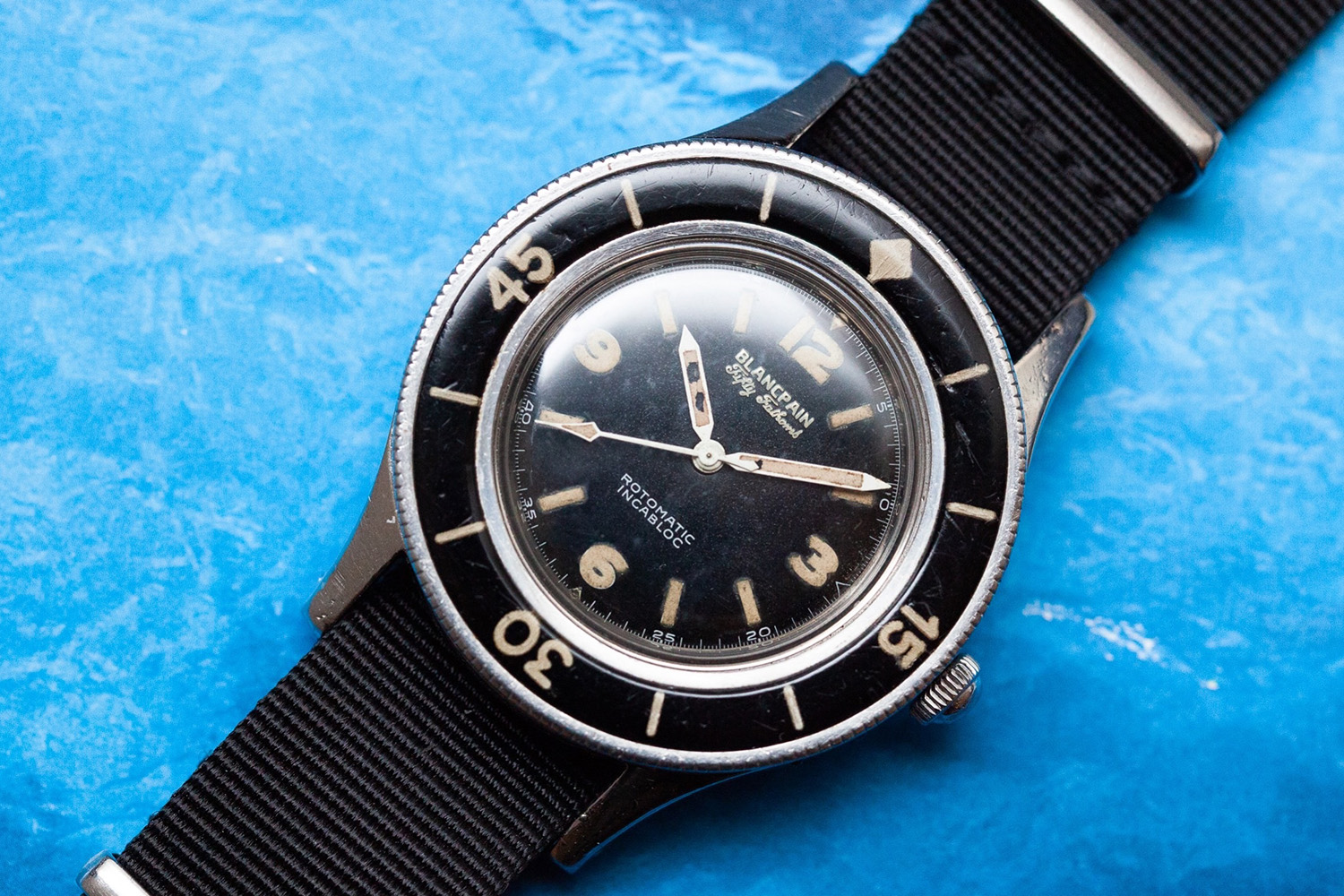
An early Fifty Fathoms with Arabic numeral markers at the quarters. Image by Blackbird Watch.
From that point, the Fifty Fathoms found rapid success in the military and later on, the civilian markets. Notably, it forged an important connection with Jacques-Yves Cousteau, the renowned French naval officer and oceanographer. Cousteau, whose wife’s family owned Air Liquide, selected the Aqualung-branded Fifty Fathoms watches for his diving team, which were delivered through Spirotechnique.
The manufacture’s early history also involves Allen V. Tornek, a New York-based diamond dealer and friend of Blancpain’s owners. Tornek saw the chance to supply these watches to the US Navy, but Blancpain couldn’t do it directly since it wasn’t a US company. Tornek then set up a local testing lab and secured a US government contract, resulting in the co-branded Tornek-Rayville “Milspec 1” Fifty Fathoms, with an initial order of 611 watches. Rayville, as watch aficionados are well aware, is the name of Blancpain’s US registered company and an inversion of the word Villeret, where the Blancpain manufacture is located. Later, the “Milspec 2” (TR-900) was produced with minimal magnetic materials to avoid triggering bombs, with a total of 1080 pieces delivered.
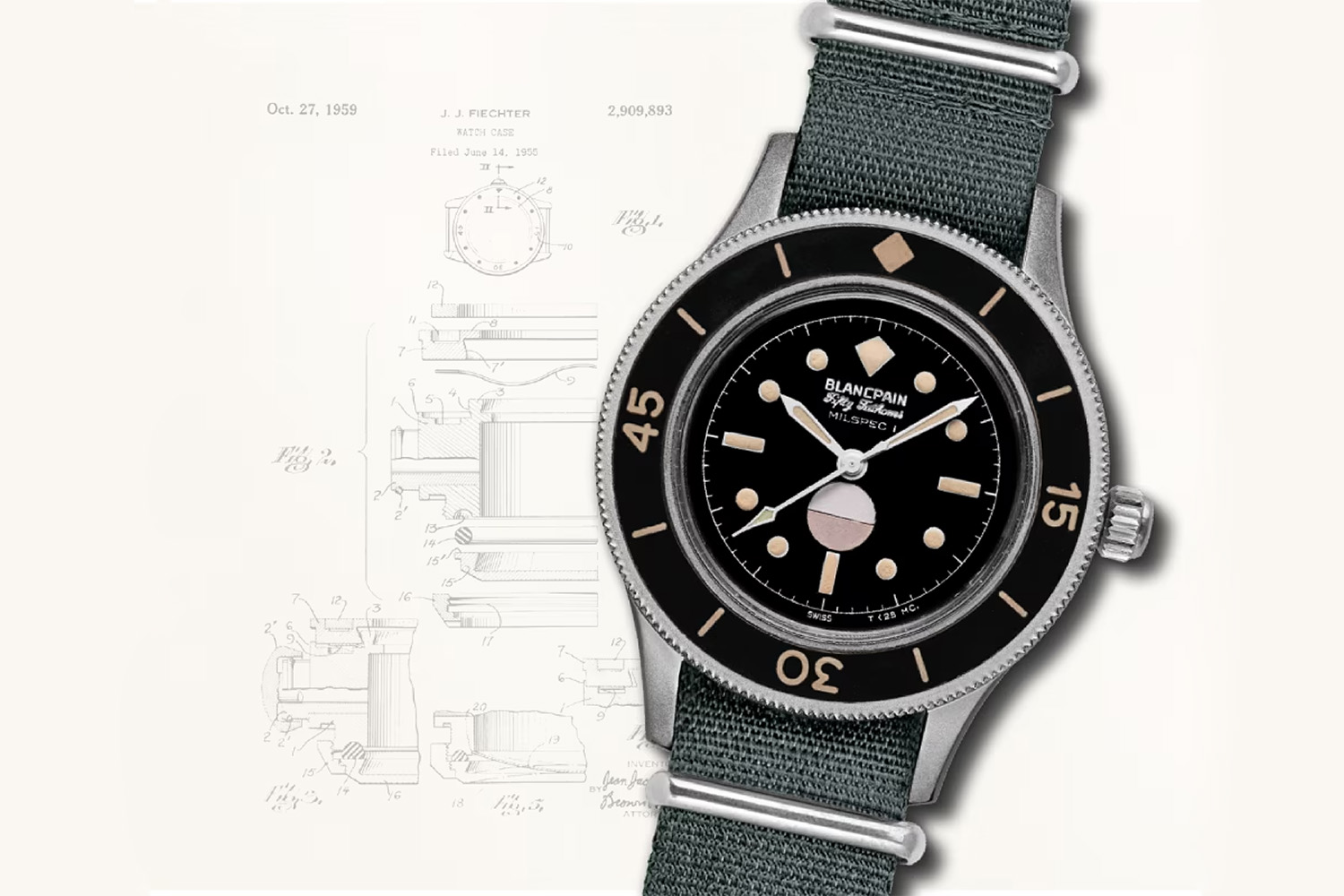
The moisture indicator, a distinctive characteristic of the MIL-SPEC 1, can be seen at the six o'clock position. Image by Blancpain.
In the civilian market, Blancpain recognized that not everyone could pull off a large 41mm watch. Just a few years after the debut of the original Fifty Fathoms, the brand introduced the smaller Fifty Fathoms Bathyscaphe, featuring cases as small as 34.5 mm. Later in the 1970s, Blancpain produced a wide variety of Fifty Fathoms and Bathyscaphe models, with funky colors and designs that perfectly captured the spirit of that era. These stylish smaller models marked the first step in the Fifty Fathoms’ transition from a practical tool to a unique accessory.
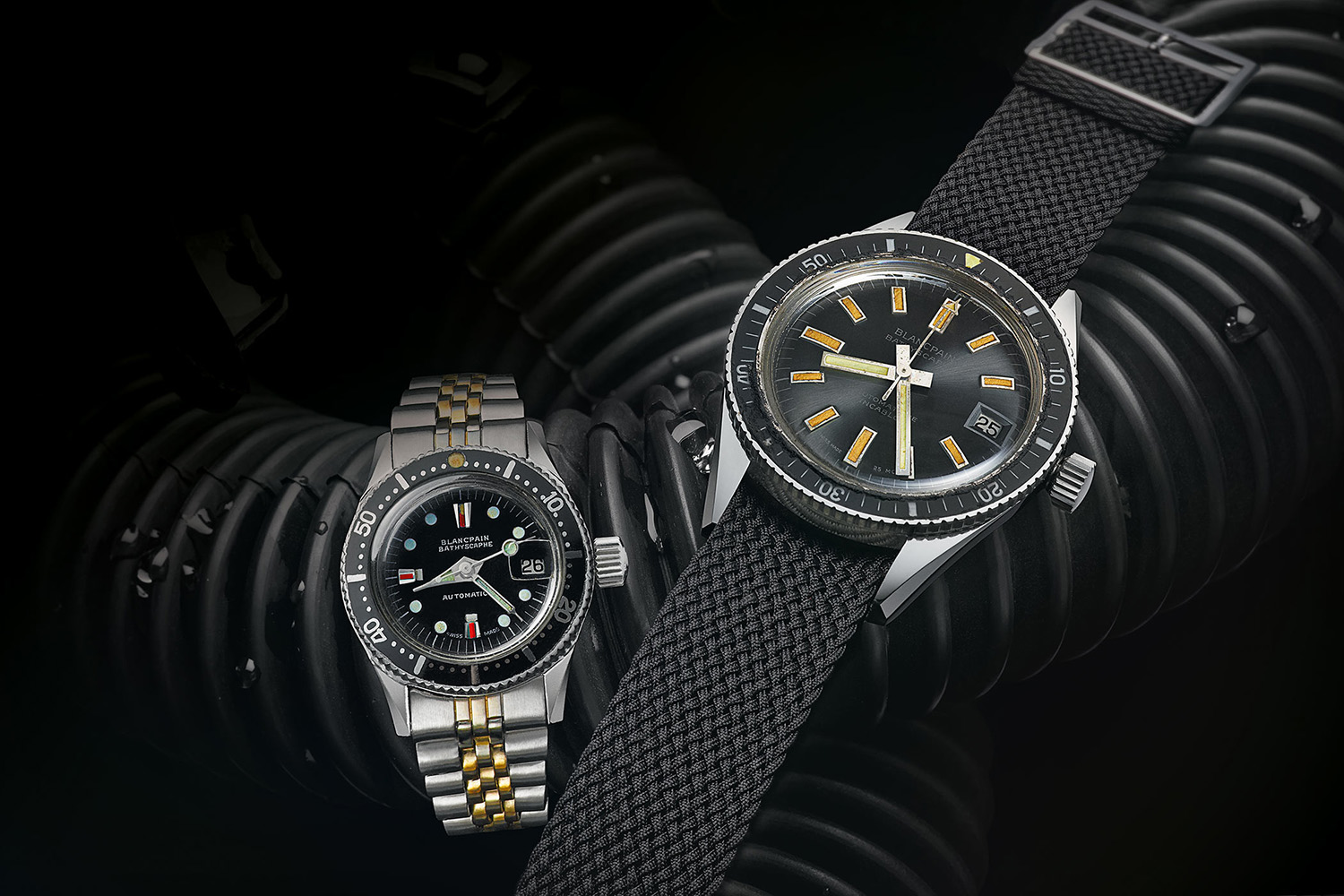
Two vintage Bathyscaphe models from the early years. Image by Blancpain.
After its formative years, the Fifty Fathoms went through a second chapter marked by modernity and a zest for adventure. In 1983, Jean-Claude Biver and Jacques Piguet took over the brand, embarking on a renaissance rooted in traditional watchmaking while also expanding its repertoire to encompass sports watches. In 1997, the brand unveiled a Trilogy of sports watches designed for air, sea, and land applications, all sharing a common 40.3 mm case, bezel, and bracelet design. The Fifty Fathoms represented the sea, the Air Command took to the skies, and the Fifty Fathoms GMT was tailored for land.
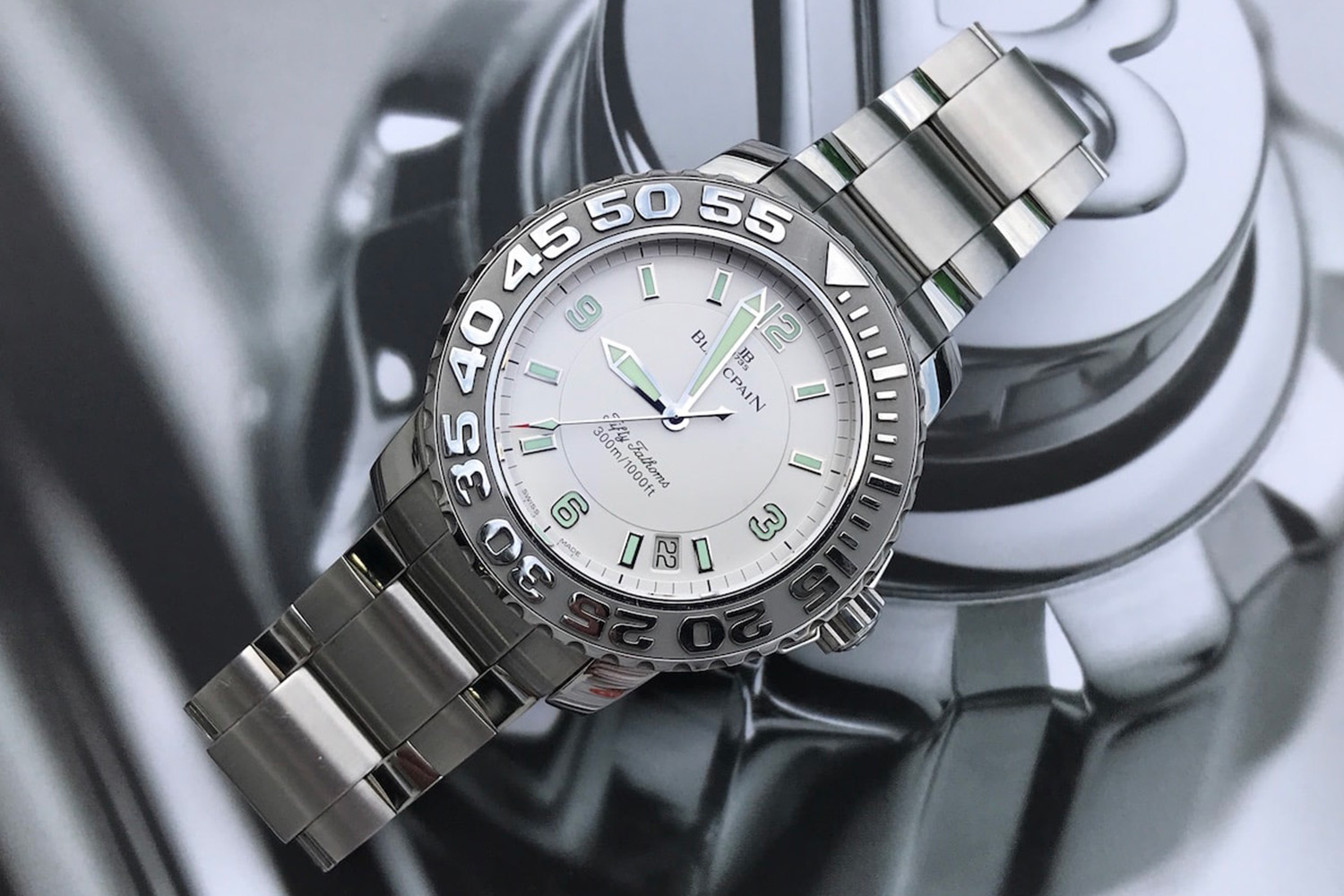
An unusual Fifty Fathoms from the Trilogy era featuring a white dial. Image by Fratello.
This period is remarkable for two reasons: the revival of the Fifty Fathoms and the infusion of modern creativity. Blancpain introduced significant changes, such as updating the traditional black bezel with a bright metallic one featuring raised numerals, adding an elegant touch. They also ventured into new materials, including precious metals like rose, yellow, and white gold — a first for the Fifty Fathoms line. In 1999, the Concept 2000 collection pushed the boundaries with its stylish two-tone steel and rubber bezel and bracelet.
The Trilogy era, spanning from 1997 to 2003, witnessed significant success attributed to the exceptional quality in terms of design and finishing of the watches, along with an impressive movement providing a 100-hour power reserve. It marked the second phase of Blancpain’s transformation of the Fifty Fathoms into an easily wearable accessory, highlighting as well the fusion of luxury and functionality.
Turning into an exclusive icon
Forging ahead in the new millennium, this chapter is where the Blancpain Fifty Fathoms saw its most dramatic evolution yet. In 2002, its current President and CEO Marc A. Hayek took over the helm of the company and he had very quickly recognized the allure of the Fifty Fathoms. The watch was to celebrate its 50th anniversary in 2003 and seizing the opportunity, he introduced a new and modern re-edition within the year. That pivotal model was the Fifty Fathoms 50th Anniversary.
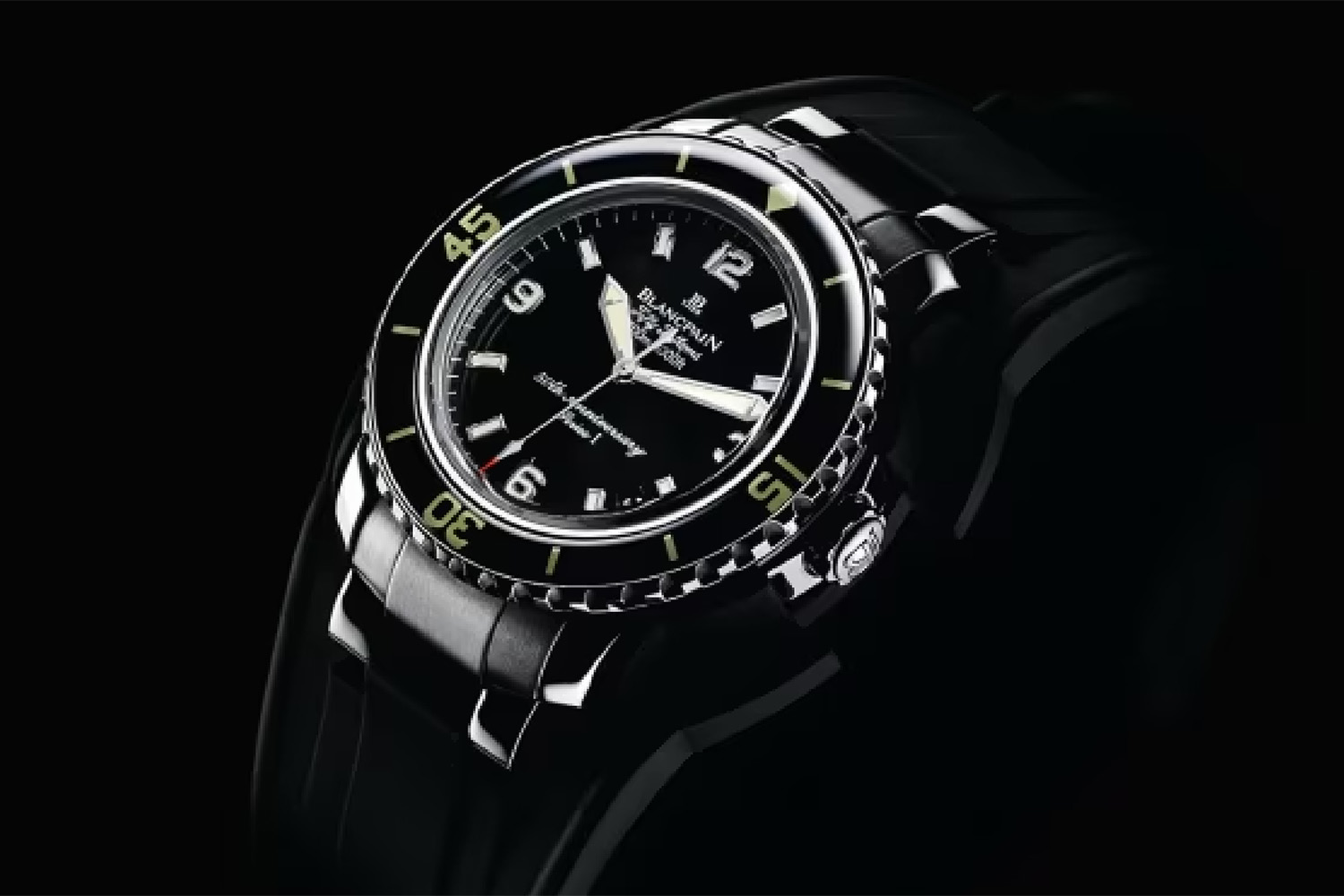
The 50th Anniversary model, accompanied by a special rubber strap in addition to the metal bracelet. Image by Blancpain.
What sets this watch apart and why is it significant? The Fifty Fathoms 50th Anniversary model marked a significant departure from Jean-Claude Biver’s era of all-metal bezels. Instead, it debuted a sapphire bezel insert, paying tribute to the vintage bakelite bezel, but with enhanced practicality — the sapphire bezel concealed the luminescent numerals beneath. This shift set the tone for all subsequent modern Fifty Fathoms watches. Limited to 150 pieces, it was divided into three batches for the European, Asian, and American markets, with the case backs engraved as Series I, II, and III.
Then in 2007, following four years of preparation since the 2003 anniversary launch, Blancpain reintroduced a full-fledged, regular collection of Fifty Fathoms. This relaunch brought about two significant changes: the 45mm case that still characterizes today’s collection and the introduction of complicated models. Notably, its tourbillon with eight-day power reserve, as well as audacious professional models like the X Fathoms, designed with a depth gauge.
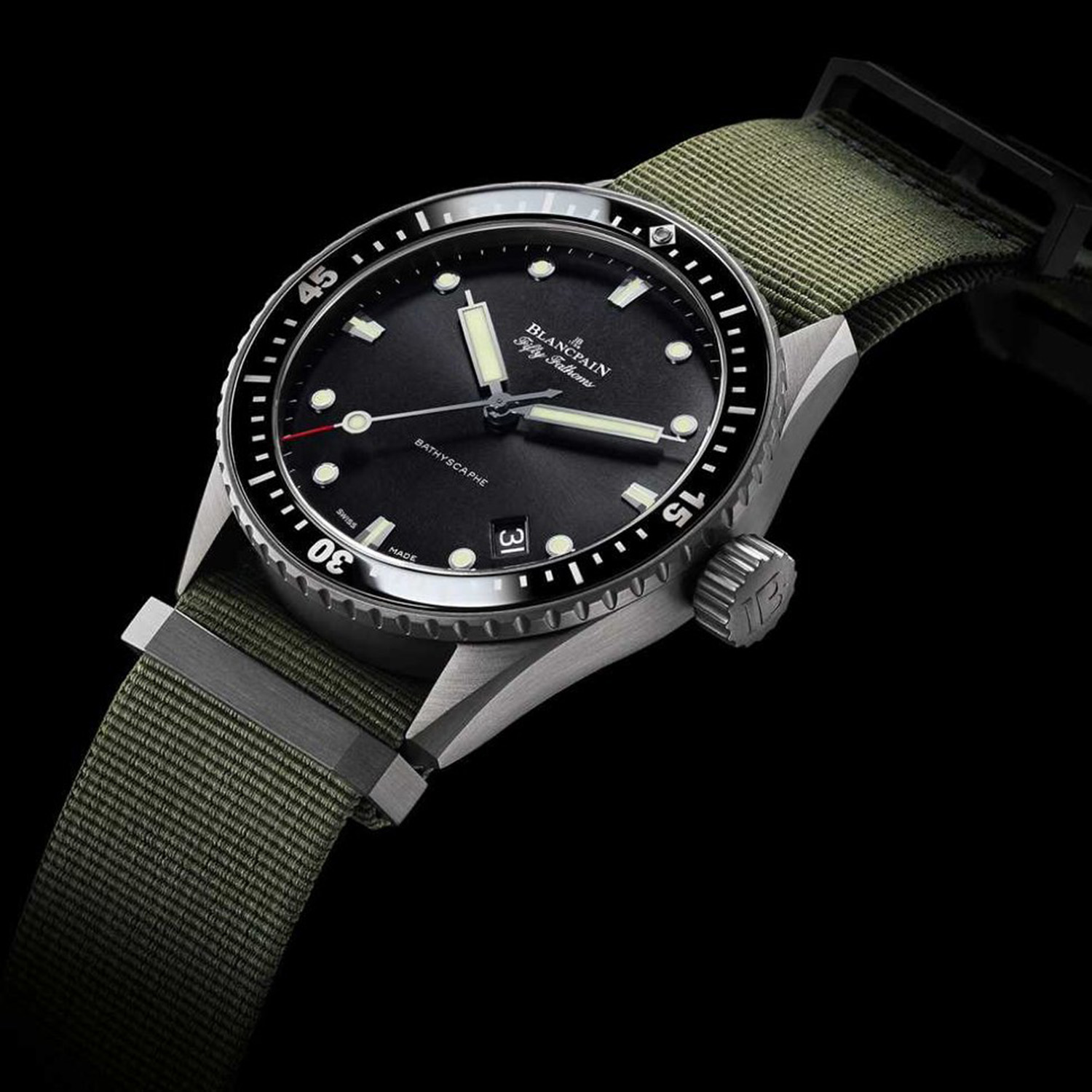
In 2013, Blancpain revived the Bathyscaphe line, featuring a more modest 43 mm case compared to the 45 mm Fifty Fathoms. The Bathyscaphe evoked the spirit of the original with a sleek, angular case design and a cleaner overall dial. Image by Blancpain
It was within this modern era that the Fifty Fathoms reasserted its status as a pioneering dive watch and even attained a cult following. Several key models garnered significant attention following fervent demand, notably the special limited editions featuring a 40.3 mm case. These pieces have been introduced almost annually since 2017.
For instance, in 2017, Blancpain unveiled the Fifty Fathoms “Tribute to Mil-Spec,” a 500-piece limited edition featuring a highly wearable case with elements reminiscent of the early military models. The revival of the “Mil-Spec” designation after decades delighted true enthusiasts and collectors. In 2018, Blancpain introduced the Fifty Fathoms Ocean Commitment III, featuring a blue dial and bezel, and the brand’s Ocean Commitment logo at six o’clock to emphasize the manufacture’s contributions to ocean conservation.
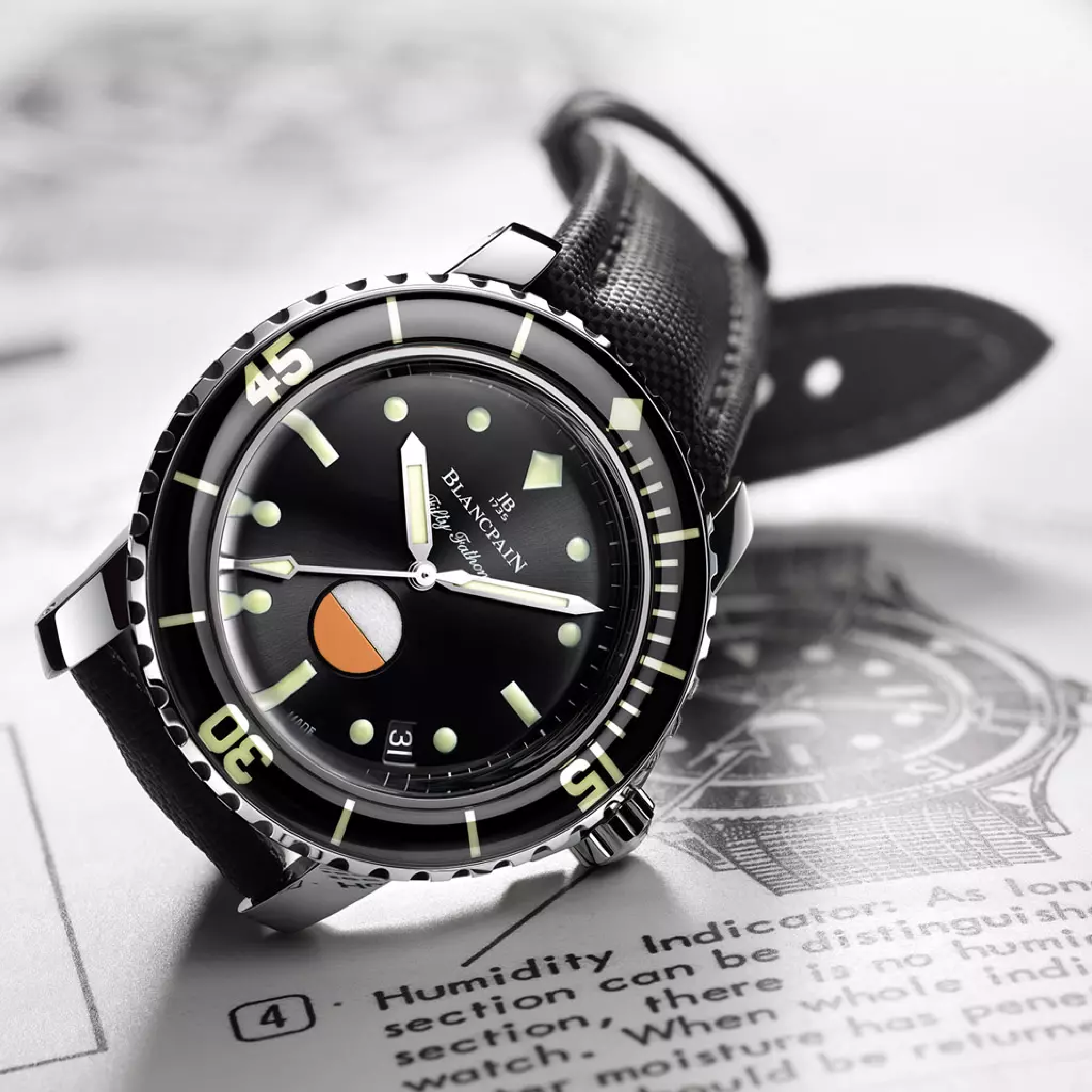
The “Mil-Spec” limited edition from 2017
2019 witnessed the debut of the Fifty Fathoms Barakuda, with its instantly recognizable red and beige hour markers inspired by a 1970s version for the German Navy. In 2020, Blancpain revisited the “Mil-Spec” with Hodinkee by removing the date, and in 2021, Blancpain resurrected the highly coveted “No Rad.” All of these models featured the coveted 40.3 mm case, distinguishing them from the modern 45mm Fifty Fathoms, and contributing to their overall desirability. Vintage watch lovers might be glad to recall that all the Fifty Fathoms watches made at the turn of the millennium were also in 40.3mm.
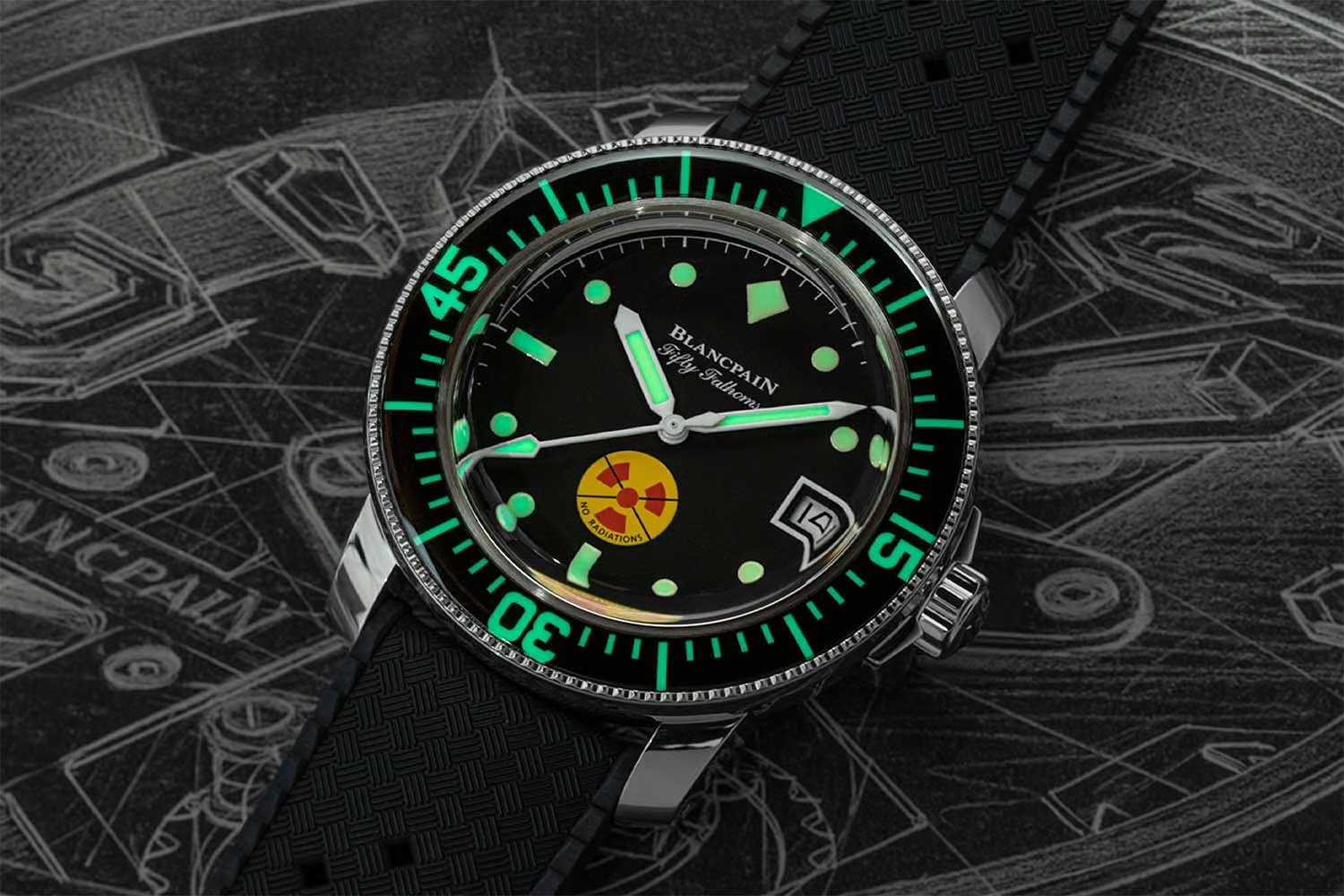
The “No Rad” limited edition from 2021
The modern limited editions truly define the latest phase and identity of the Fifty Fathoms, as they are exquisite, unique timepieces that exclusively resonate with connoisseurs and are highly sought after within that select circle.
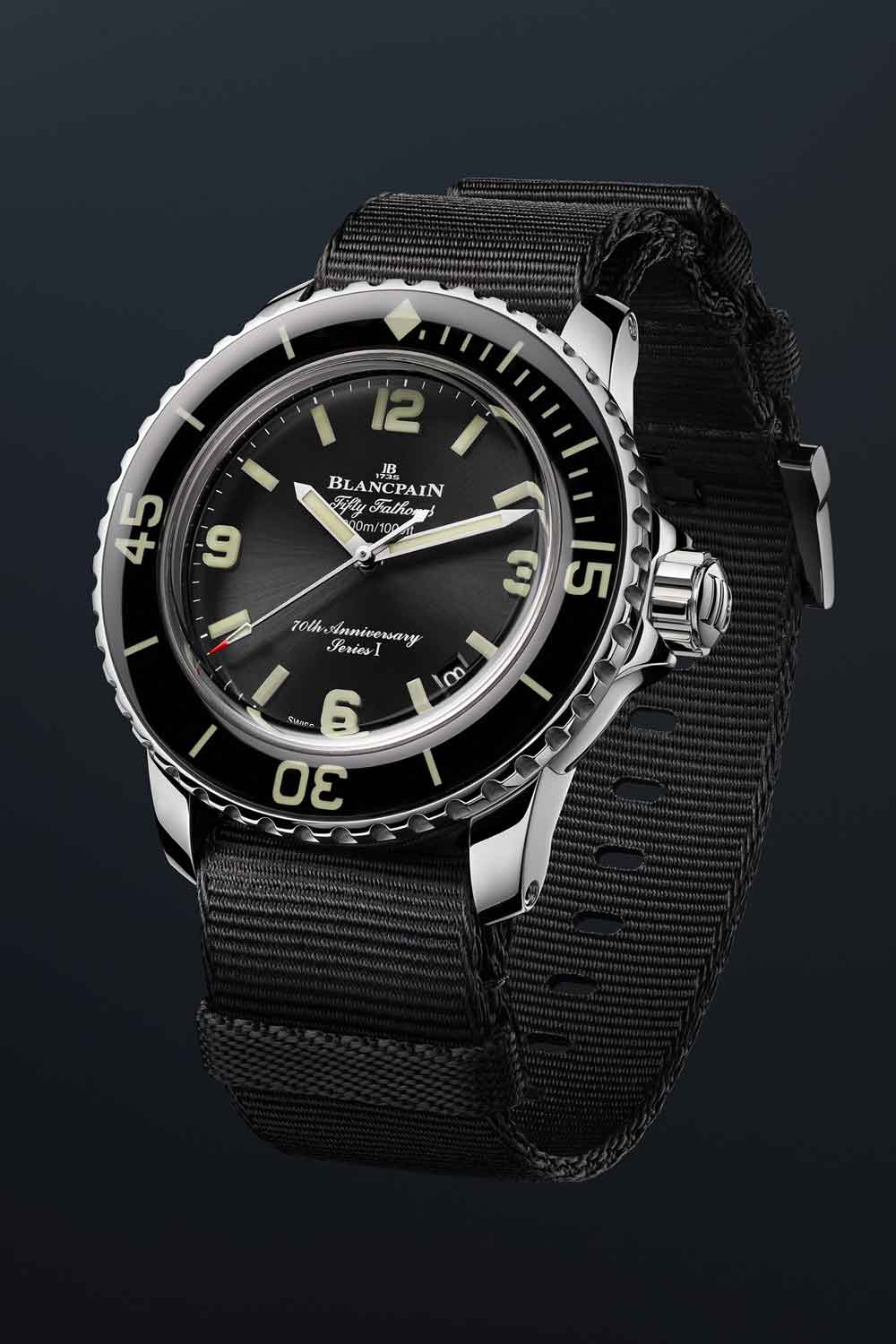
Blancpain Fifty Fathoms 70th Anniversary Act 1
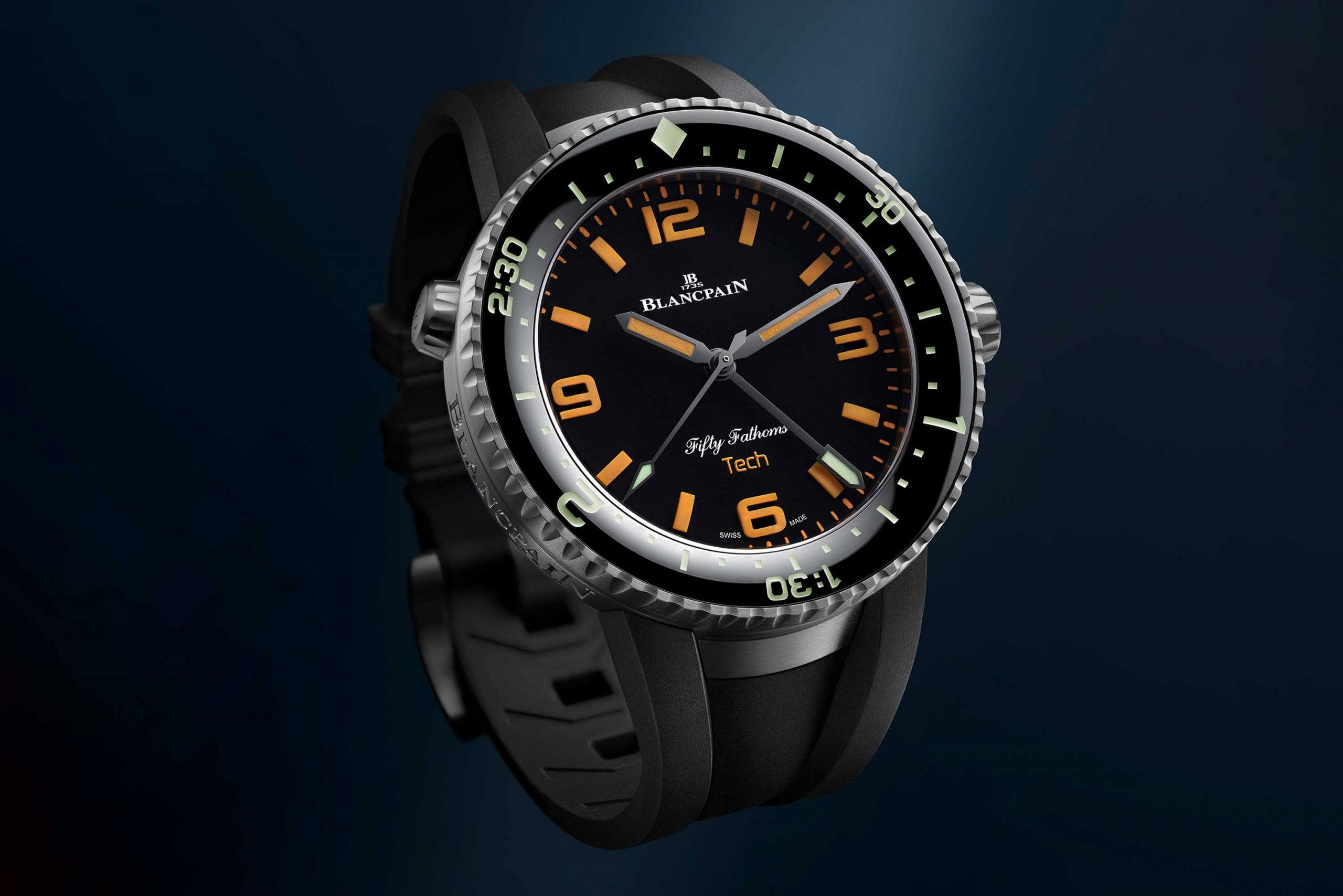
Blancpain Fifty Fathoms 70th Anniversary Act 2 – Tech Gombessa
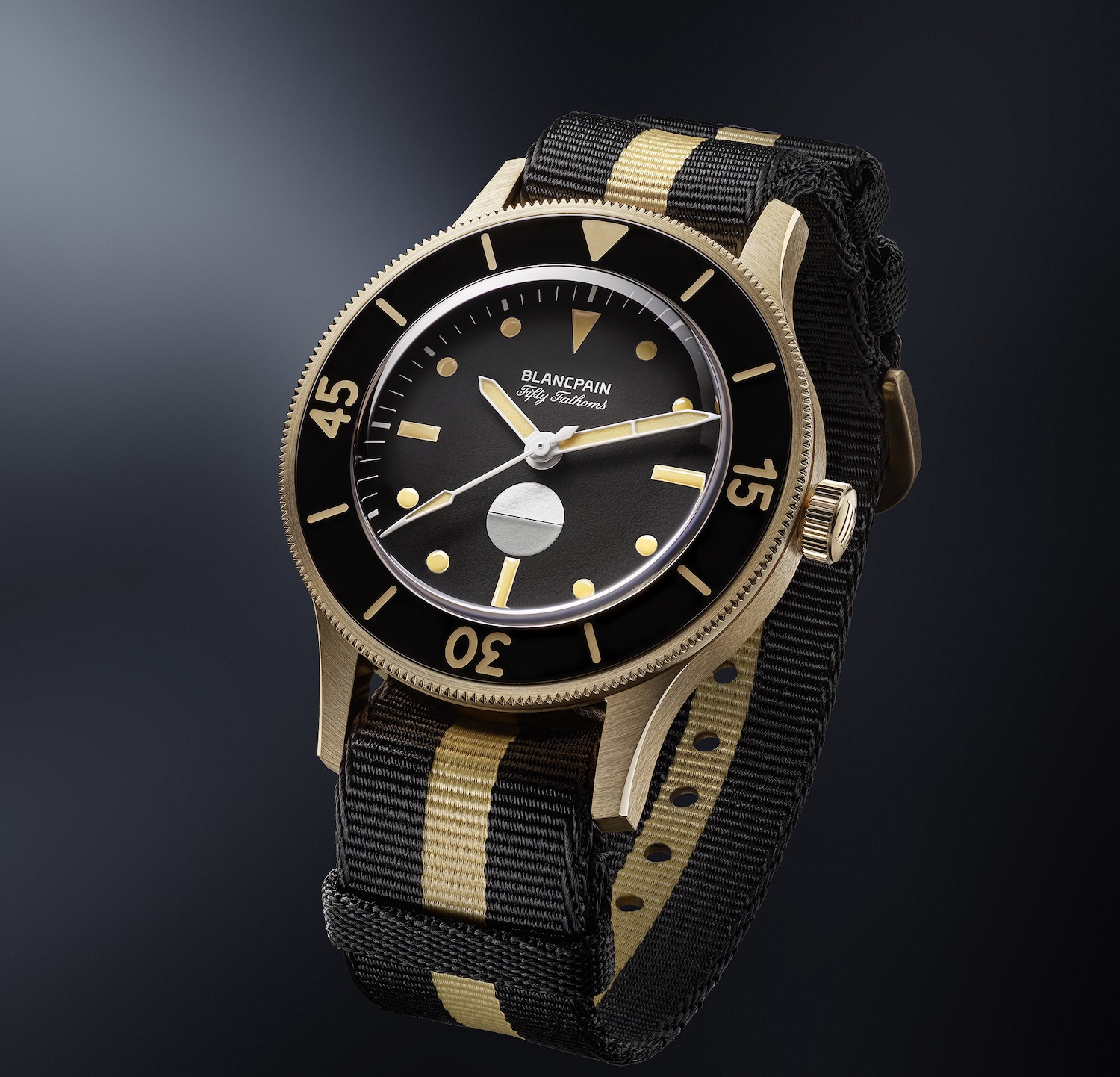
The Blancpain Fifty Fathoms 70th Anniversary Act 3
Over the last seven decades, the Blancpain Fifty Fathoms has undergone a remarkable transformation, evolving from its origins as a military underwater timekeeping tool into a symbol of understated luxury. The Fifty Fathoms 70th anniversary Acts 1, 2 and 3 provide a cool visual summary of the watch’s incredible horological journey.
It has continually embraced advancements in materials, water resistance, movements, and most importantly, new and creative designs. Furthermore, the introduction of special limited editions paying tribute to historical eras has further heightened its prestige. Its limited production quantities assure its exclusivity to a discerning circle of connoisseurs who love nothing more than to revel in its long and storied history.




















